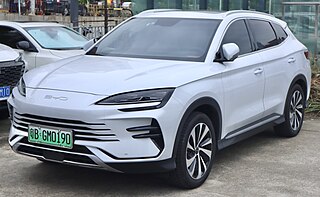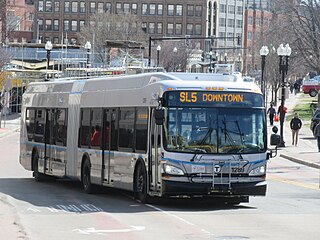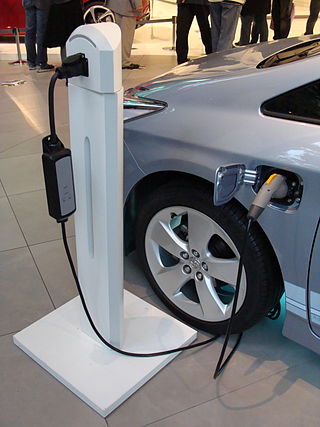
A plug-in hybrid electric vehicle (PHEV) or simply plug-in hybrid is a type of hybrid electric vehicle equipped with a rechargeable battery pack that can be directly replenished via a charging cable plugged into an external electric power source, in addition to charging internally by its on-board internal combustion engine-powered generator. While PHEVs are predominantly passenger cars, there are also plug-in hybrid variants of sports cars, commercial vehicles, vans, utility trucks, buses, trains, motorcycles, mopeds, military vehicles and boats.
Energy Conversion Devices, Inc. (ECD) was an American photovoltaics manufacturer of thin-film solar cells made of amorphous silicon used in flexible laminates and in building-integrated photovoltaics. The company was also a manufacturer of rechargeable batteries and other renewable energy related products. ECD was headquartered in Rochester Hills, Michigan.

Plug In America (PIA) is a 501(c)(3) non-profit educational organization that promotes and advocates the use of plug-in cars, trucks and sports utility vehicles (SUVs) powered by domestic and renewable electricity which it claims will help reduce dependence on fossil fuels, improve the global environment and reduce greenhouse gases and climate change.

A hybrid electric vehicle (HEV) is a type of hybrid vehicle that combines a conventional internal combustion engine (ICE) system with an electric propulsion system. The presence of the electric powertrain is intended to achieve either better fuel economy than a conventional vehicle or better performance. There is a variety of HEV types and the degree to which each functions as an electric vehicle (EV) also varies. The most common form of HEV is the hybrid electric car, although hybrid electric trucks, buses, boats, and aircraft also exist.

An alternative fuel vehicle is a motor vehicle that runs on alternative fuel rather than traditional petroleum fuels. The term also refers to any technology powering an engine that does not solely involve petroleum. Because of a combination of factors, such as environmental and health concerns including climate change and air pollution, high oil-prices and the potential for peak oil, development of cleaner alternative fuels and advanced power systems for vehicles has become a high priority for many governments and vehicle manufacturers around the world.

Andrew Alfonso Frank is an emeritus American professor of Mechanical and Aeronautical Engineering at University of California, Davis. He is recognized as the father of modern plug-in hybrids, and coined the term Plug-in Hybrid Electric Vehicle (PHEV).

CalCars was a charitable, non-profit organization founded in 2002 to promote plug-in hybrid electric vehicles (PHEVs) as a key to addressing oil dependence and global warming both nationally and internationally. It was active until 2010, when the first mass-produced PHEVs arrived. CalCars envisioned millions of plug-in hybrid electric vehicles, charged by off-peak electricity from renewable energy sources, and with their internal combustion engines powered by low-carbon alternative fuels, as a way to significantly reduce greenhouse gases that come from transportation.

An electric car or electric vehicle (EV) is a passenger automobile that is propelled by an electric traction motor, using electrical energy as the primary source of propulsion. The term normally refers to a plug-in electric vehicle, typically a battery electric vehicle (BEV), which only uses energy stored in on-board battery packs, but broadly may also include plug-in hybrid electric vehicle (PHEV), range-extended electric vehicle (REEV) and fuel cell electric vehicle (FCEV), which can convert electric power from other fuels via a generator or a fuel cell.
Felix Kramer is an entrepreneur, strategist and writer. After a succession of jobs and projects in the nonprofit sector and an early internet startup, he gained attention after 2002 as the founder of the California Cars Initiative, promoting mass production of plug-in hybrid electric vehicles. Since 2009, he has written broadly on climate change awareness and solutions, and collaborated on or co-founded climate-related projects.

The patent encumbrance of large automotive NiMH batteries refers to allegations that corporate interests have used the patent system to prevent the commercialization of nickel metal hydride (NiMH) battery technology. Nickel metal hydride battery technology was considered important to the development of battery electric vehicles, plug-in hybrid electric vehicles (PHEVs) and hybrid electric vehicles (HEVs) before the technology for lithium-ion battery packs became a viable replacement.

A plug-in electric vehicle (PEV) is any road vehicle that can utilize an external source of electricity to store electrical energy within its onboard rechargeable battery packs, to power an electric motor and help propelling the wheels. PEV is a subset of electric vehicles, and includes all-electric/battery electric vehicles (BEVs) and plug-in hybrid electric vehicles (PHEVs). Sales of the first series production plug-in electric vehicles began in December 2008 with the introduction of the plug-in hybrid BYD F3DM, and then with the all-electric Mitsubishi i-MiEV in July 2009, but global retail sales only gained traction after the introduction of the mass production all-electric Nissan Leaf and the plug-in hybrid Chevrolet Volt in December 2010.

The adoption of plug-in electric vehicles in the United States is supported by the American federal government, and several states and local governments.

The Toyota Prius Plug-in Hybrid is a plug-in hybrid liftback manufactured by Toyota. The first-generation model was produced from 2012 to 2016. The second-generation model has been produced since 2016. Production of the third-generation model began in 2023.

Electric car use by country varies worldwide, as the adoption of plug-in electric vehicles is affected by consumer demand, market prices, availability of charging infrastructure, and government policies, such as purchase incentives and long term regulatory signals.

Government incentives for plug-in electric vehicles have been established around the world to support policy-driven adoption of plug-in electric vehicles. These incentives mainly take the form of purchase rebates, tax exemptions and tax credits, and additional perks that range from access to bus lanes to waivers on fees. The amount of the financial incentives may depend on vehicle battery size or all-electric range. Often hybrid electric vehicles are included. Some countries extend the benefits to fuel cell vehicles, and electric vehicle conversions.

Apollo's Fire: Igniting America's Clean Energy Economy is a 2007 book by Washington State Governor Jay Inslee and researcher Bracken Hendricks. Inslee first proposed an Apollo-scale program, designed to galvanize the nation around the urgent goal of solving the environmental and energy crises, in the Seattle Post-Intelligencer in 2002. Eventually, Inslee co-authored Apollo's Fire, in which he says that through improved federal policies, the United States can wean itself off of its dependence on foreign oil and fossil fuel, create millions of green-collar worker jobs, and stop global warming. Along these lines, he has been a prominent supporter of the Apollo Alliance.

The Norwegian fleet of plug-in electric vehicles is the largest per capita in the world. In December 2016, Norway became the first country where five in every 100 passenger cars on the road were plug-in; attained 10% in October 2018, and reached 25% in September 2022.

The adoption of plug-in electric vehicles in the France is actively supported by the French government through a bonus–malus system through which provides subsidies towards the purchase of all-electric vehicles and plug-in hybrids with low CO2 emissions. The government also provides non-monetary incentives; subsidies for the deployment of charging infrastructure; and long term regulations with specific targets. Additionally, France passed a law in December 2019 to phase out sales of cars that burn fossil fuels by 2040.

The adoption of plug-in electric vehicles in Sweden is actively supported by the Government of the Kingdom of Sweden. As of December 2021, a total of 355,737 light-duty plug-in electric vehicles have been registered since 2011, consisting of 226,731 plug-in hybrids, 120,343 all-electric cars, and 8,663 fully electric commercial vans.

The stock of plug-in electric vehicles in California is the largest in the United States, and as of December 2023, cumulative plug-in car registrations in the state since 2010 totaled 1.77 million units. Between November 2016 and until 2020, China was the only country market that exceeded California in terms of cumulative plug-in electric car sales.
















